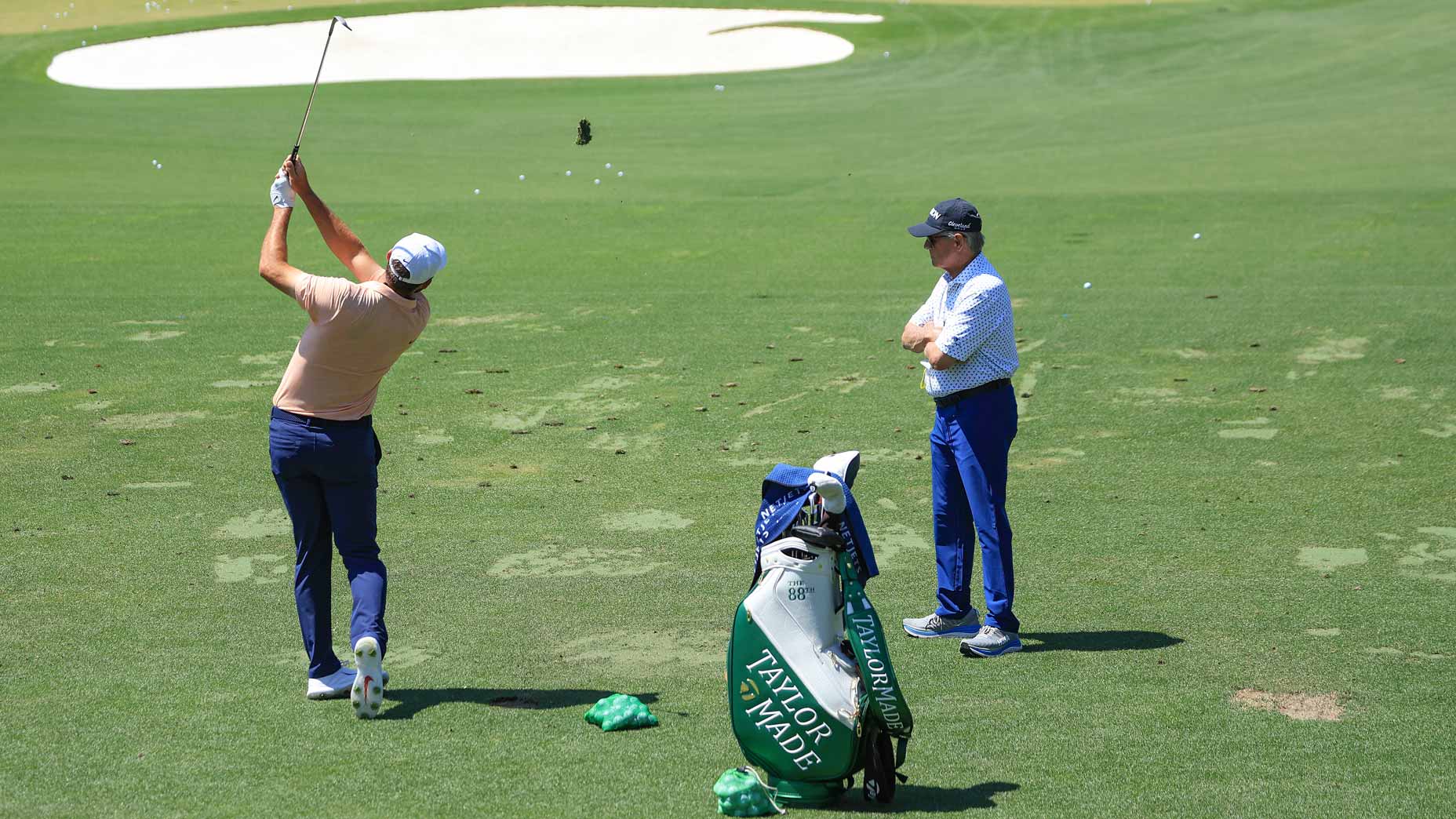It doesn’t have to be that complex. It shouldn’t be.
That was among my takeaways from listening to Scottie Scheffler describe (to Colt Knost and Drew Stoltz, the hosts of Subpar) what he and longtime coach Randy Smith work on.
Of course, it’s easier to simplify things when you have decades of golf obsession under your belt. It’s easier to simplify things when you’ve been the best player in most of your tournaments for most of your life. It’s easier to simplify things when you pair a genius with a generational talent. And “genius” is exactly the word Scheffler used to describe Smith.
My favorite exchange of the conversation came when Knost, who used to play and practice at Royal Oaks in Dallas under Smith’s watchful eye (and with a young Scheffler looking on), asked Scheffler if he was surprised that more Tour pros haven’t gone to see him.
“I mean, am I surprised? Yeah,” Scheffler said, laughing. “Randy is like — I mean, he’s totally out of his mind. But when it comes to the golf swing, he is such a genius. He’s like a little savant.”
In an age of high-tech, data-heavy coaching, Smith is something of a throwback. He relies on his eyes and his intuition. Scheffler relies on them, too.
“I was out there before the Presidents Cup and I was telling Randy, I was like, ‘I’m trying something but I’m not going to tell you what it is. I’m going to see if you can figure it out,'” Scheffler said. “And he watched me hit like five balls and pointed out exactly what I was doing, it was the tiniest movement in my left hand with the grip. And I was like, ‘how did you do that?'”
Scheffler isn’t afraid to lean on Smith mid-tournament, either. One particularly important diagnosis came on Thursday afternoon at this year’s Masters.
“He gave me a swing tip after the first round,” Scheffler said. “The first round I had played good, I scored really well, some of the best of the year in terms of playing and scoring and controlling my ball. But I didn’t feel very good about how I was swinging it.
“I came off the course and Randy was like, ‘great job, how are you feeling?’ And I was like, ‘My swing did not feel good today, I feel like I was just scraping it around.’
“I told him what I was feeling, he gave me one tip to adjust my grip slightly, I hit a few shots and it was like a lightbulb went off. I felt what I wanted to feel and it was kinda game on from there, I didn’t have to think of anything else.”
Game on from there meant rolling to his second career Masters victory, this time by four. And it meant the next step in a dominant eight-win season that has Scheffler at World No. 1 by a significant margin.
One other detail of note: Scheffler and Smith’s use of a launch monitor — or lack thereof. Short of Tiger Woods, you’d be hard-pressed to find a player in the modern era who’s been as good from tee to green as Scheffler has been these last few years. But modern technology doesn’t deserve much of the credit.
“It is funny with the Trackman and stuff,” Scheffler said. “I practice with mine pretty much every day at home because I’m always looking at distance and stuff. And Randy, if I’m ever struggling, will always try to dial in on the numbers. And I’ll literally take the iPad and be like, ‘We don’t need any of this stuff. We don’t know how to do this. We look at distance and that’s it.'”
Instead, Scheffler said, his most effective form of practice is getting back to the fundamentals. Good grip, good posture, good ball position — what he calls the ABCs — as he dials in a baseline for the day.
“Then we’re just hitting, creating shots, continue to learn how to control that little golf ball.”
Pretty well, so far.

